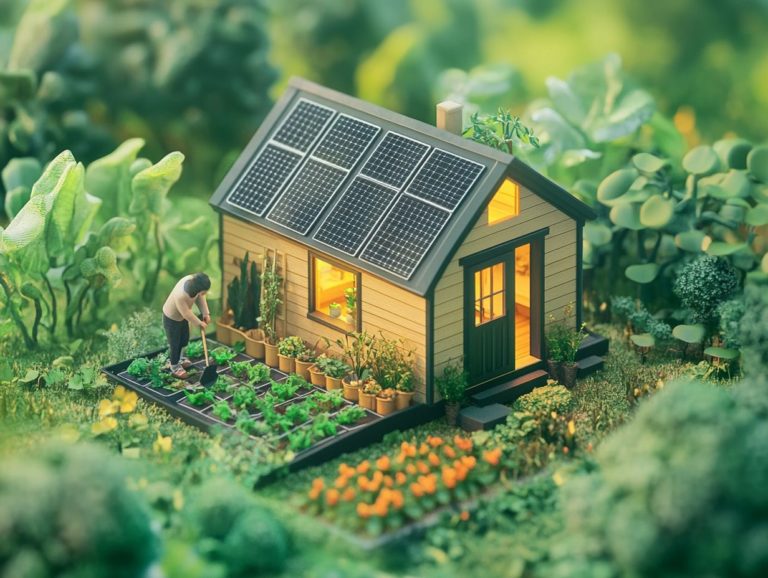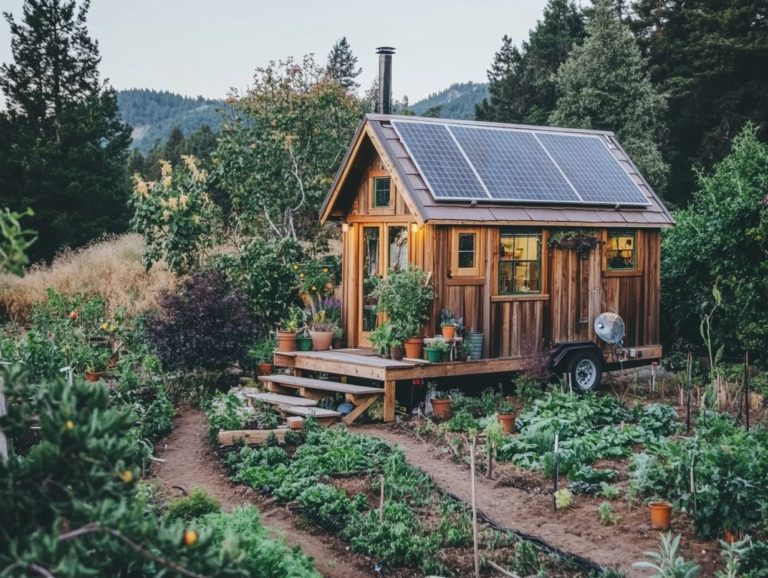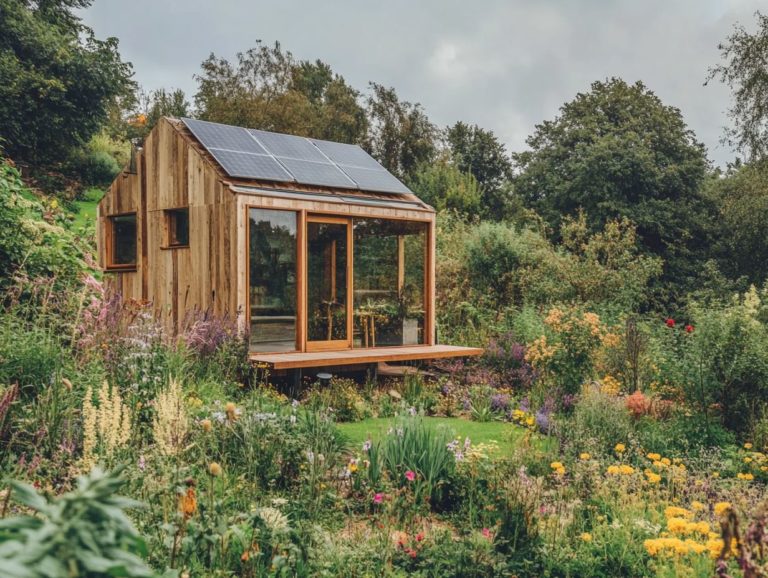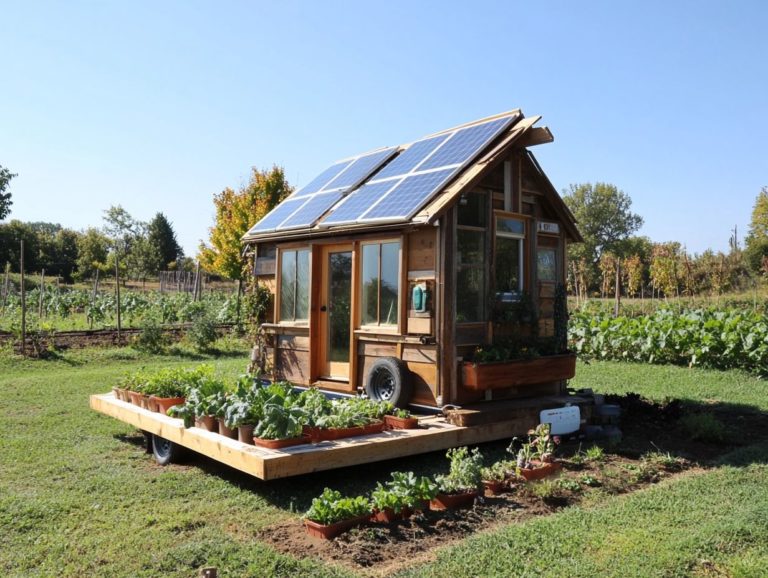Sustainable Materials: Cost vs. Long-Term Benefits
In an era where environmental awareness is gaining momentum, sustainable materials are becoming increasingly essential in both construction and everyday products.
This discussion delves into the delicate balance between upfront costs and the long-term savings that these eco-friendly options can offer. You’ll explore the environmental benefits, including their role in reducing your carbon footprint and minimizing waste.
With real-world examples and case studies, you ll uncover practical applications in construction and daily life that make sustainability not just a lofty goal, but an achievable reality.
Act now! Your choice of sustainable materials can create a healthier planet today while also paving the way for smarter financial decisions.
Contents [hide]
- Key Takeaways:
- Cost Considerations
- Environmental Benefits
- Sustainable Materials in Construction
- Sustainable Materials in Everyday Products
- Frequently Asked Questions
- What are sustainable materials and how do they differ from traditional materials?
- Why is there a cost difference between sustainable materials and traditional materials?
- What are the long-term benefits of using sustainable materials?
- In what ways can using sustainable materials save money in the long run?
- How can businesses justify the higher upfront cost of sustainable materials?
- Are sustainable materials always more expensive than traditional materials?
Key Takeaways:
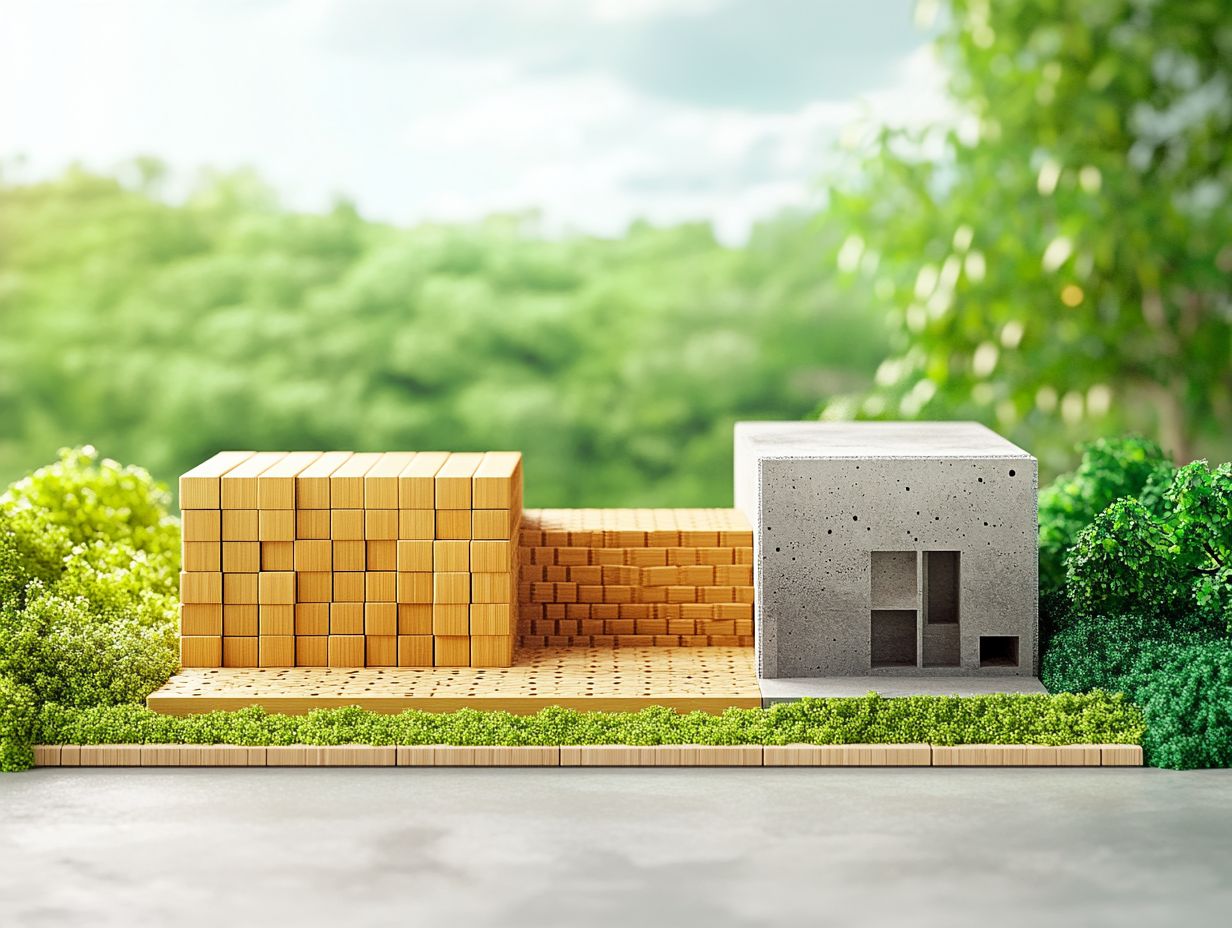
- Sustainable materials may have higher upfront costs, but their long-term benefits outweigh the initial investment.
- Choosing sustainable materials can significantly reduce carbon footprint and waste, contributing to a more sustainable environment.
- Sustainable materials are also available as eco-friendly alternatives in everyday products.
Defining Sustainable Materials
Sustainable materials are derived from renewable resources. They are designed to minimize environmental impacts while maximizing durability and performance across various applications, particularly in the construction industry.
Incorporating bamboo, recycled steel, and cross-laminated timber into your projects helps reduce your building s carbon footprint. This not only contributes to a healthier indoor environment for occupants but also aligns seamlessly with sustainable building practices. These materials also meet regulatory compliance and enhance the overall value and appeal of your buildings in today s competitive market.
The importance of sustainable materials transcends mere compliance; it plays a vital role in resource conservation and the ongoing fight against climate change. By choosing eco-friendly alternatives, you contribute meaningfully to a circular economy while promoting practices that minimize waste and pollution.
Commonly used sustainable materials include:
- Reclaimed wood
- Natural stone
- Bio-based composites
Each of these options offers unique benefits while reducing environmental harm. This approach aligns with global sustainable development goals, encouraging responsible consumption that supports both the economy and the environment, ensuring a resilient future for generations to come.
Cost Considerations
When evaluating sustainable construction options, weigh upfront costs against long-term savings to maximize your investment. These factors profoundly influence construction economics and the overall financial soundness of your building projects.
Though the initial investment in sustainable materials and energy-efficient designs may appear steeper, the advantages often reveal themselves through reduced operational costs, lower maintenance expenses, and an increase in building value over time. Investing wisely upfront can lead to substantial returns in the future.
Upfront Costs vs. Long-Term Savings
Understanding the balance between upfront costs and long-term savings is crucial for anyone involved in the sustainable construction industry. These financial factors play a pivotal role in determining a project’s feasibility from start to finish.
As you navigate the world of sustainable materials and technologies, it s essential to grasp their initial investment costs clearly. Many find themselves drawn to innovative eco-friendly options, yet immediate budget constraints can be daunting.
However, a closer look reveals that those seemingly higher upfront costs can be significantly offset by lower operational expenses over time. Consider how energy-efficient systems, careful resource choices, and durable building methods lead to reduced maintenance and energy bills. These choices contribute to a more financially sound decision in the long run.
Environmental Benefits

The environmental advantages of sustainable construction practices extend far beyond regulatory compliance; they are crucial in combating climate change, minimizing waste, and significantly reducing the carbon footprint linked to building projects.
Embracing these practices aligns you with environmental standards and positions you as a leader in the mission to protect our planet.
Reducing Carbon Footprint and Waste
Cutting down your carbon footprint and waste is vital for sustainable construction. Make eco-friendly choices like using recycled materials and energy-efficient designs.
This commitment extends the life of resources and fosters a circular economy, where materials are repurposed instead of discarded. By opting for sustainable materials, you contribute to a system that prioritizes resource regeneration and efficiency.
Smart systems that track resource use and waste generation provide valuable data for improvement. These technologies can automate processes to optimize material usage and significantly reduce waste.
These strategies also diminish your environmental impact and offer long-term economic benefits, paving the way for sustainable growth in the construction sector.
Sustainable Materials in Construction
Sustainable materials are the foundation of green building initiatives, offering resource conservation advantages and boosting energy efficiency and overall life cycle performance. This is essential for ensuring the comfort and health of everyone who occupies the space.
Examples and Case Studies
Inspiring examples show how sustainable materials transform construction. Projects like these not only look great but also greatly reduce carbon footprints.
Across cities worldwide, many projects have successfully integrated these materials. For instance, in a major metropolitan area, using recycled steel minimized waste and demonstrated cost-effectiveness through lower material expenses.
Another cutting-edge project featuring cross-laminated timber achieved remarkable energy efficiency ratings, effectively reducing heating and cooling costs.
These examples highlight the broader impacts sustainable materials have on the environment, fostering a movement toward greener building practices while delivering significant economic benefits that resonate within communities.
Sustainable Materials in Everyday Products

Sustainable materials extend far beyond construction; they are making their way into everyday products, fueled by an escalating market demand for eco-friendly alternatives.
This shift is crucial for conserving resources and reducing our impact on the planet, aligning with the values of a more conscious consumer base.
Join the movement toward sustainable building. Your choices today shape a healthier planet for tomorrow.
Eco-Friendly Alternatives and Availability
Eco-friendly alternatives to traditional materials are increasingly available, driven by a growing demand for sustainable practices. This trend opens the door to innovative solutions in product development and energy-efficient design.
You’re likely noticing the rising use of bamboo, hemp, and recycled plastics. These materials not only cut down on waste but are also exciting new options for everyday products. For example, bamboo furniture is becoming a popular choice because it is strong and fast-growing, making it a sustainable option for your home decor.
Similarly, in the world of fashion, recycled materials are making waves as designers embrace upcycled fabrics to lessen their environmental impact.
Renewable energy solutions like solar panels and wind turbines are also leading this eco-revolution. They encourage greener manufacturing processes and reduce carbon footprints, which represent the total greenhouse gas emissions caused by an individual or organization. By adopting these forward-thinking approaches, industries are actively collaborating to build a more sustainable future.
Frequently Asked Questions
What are sustainable materials and how do they differ from traditional materials?
Sustainable materials are produced using methods that minimize negative environmental impacts. In contrast, traditional materials are usually mass-produced, contributing to climate change.
Why is there a cost difference between sustainable materials and traditional materials?
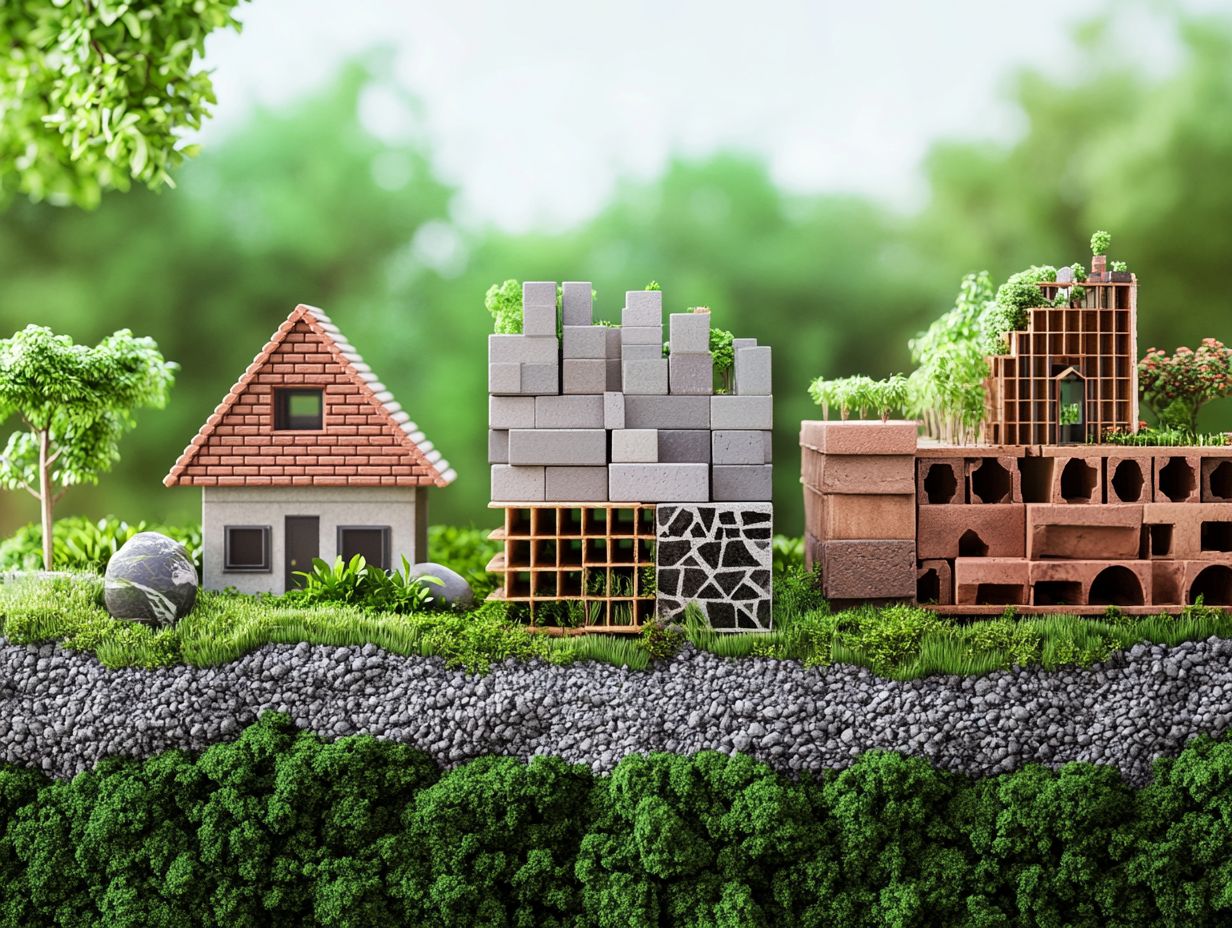
The cost difference arises from the sustainable methods and materials used in production, which often require specialized equipment and processes, impacting initial investment costs.
What are the long-term benefits of using sustainable materials?
Long-term benefits of using sustainable materials include a reduced environmental impact, improved health and safety for workers, and a more resilient supply chain. These materials also have a longer lifespan, leading to fewer replacements and lower maintenance costs.
In what ways can using sustainable materials save money in the long run?
Using sustainable materials can save money by reducing waste disposal, energy consumption, and transportation costs. Investing in these materials can also provide tax incentives or government subsidies, enhancing financial viability.
How can businesses justify the higher upfront cost of sustainable materials?
Businesses can justify the higher upfront cost by considering the long-term benefits and cost savings associated with sustainable materials. This also reflects their commitment to corporate social responsibility and strengthens brand image, which is increasingly important to consumers.
Are sustainable materials always more expensive than traditional materials?
Not necessarily. While there can be a cost difference, many affordable and innovative sustainable materials are available, such as cross-laminated timber and recycled steel. The long-term benefits and savings may outweigh any initial cost difference, especially regarding operational costs and energy efficiency.
Explore the eco-friendly options available to you today!


